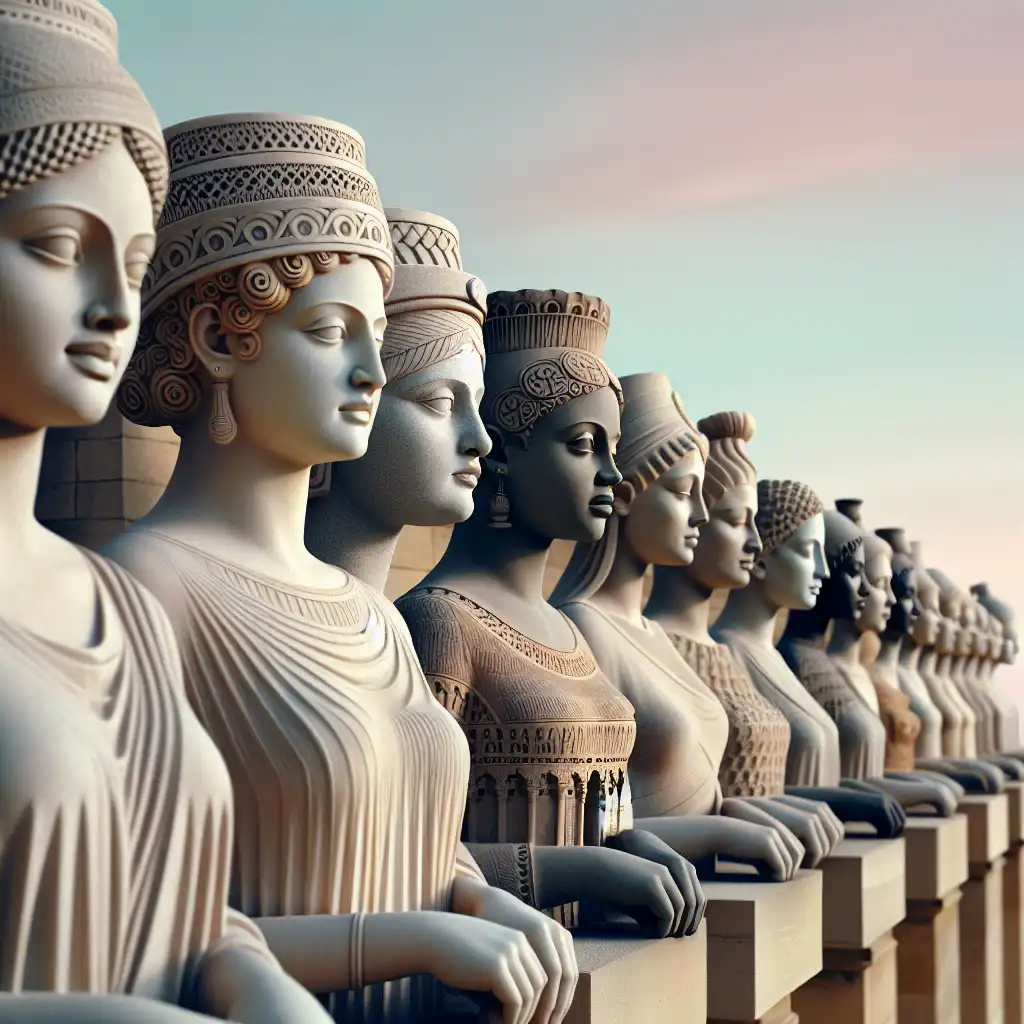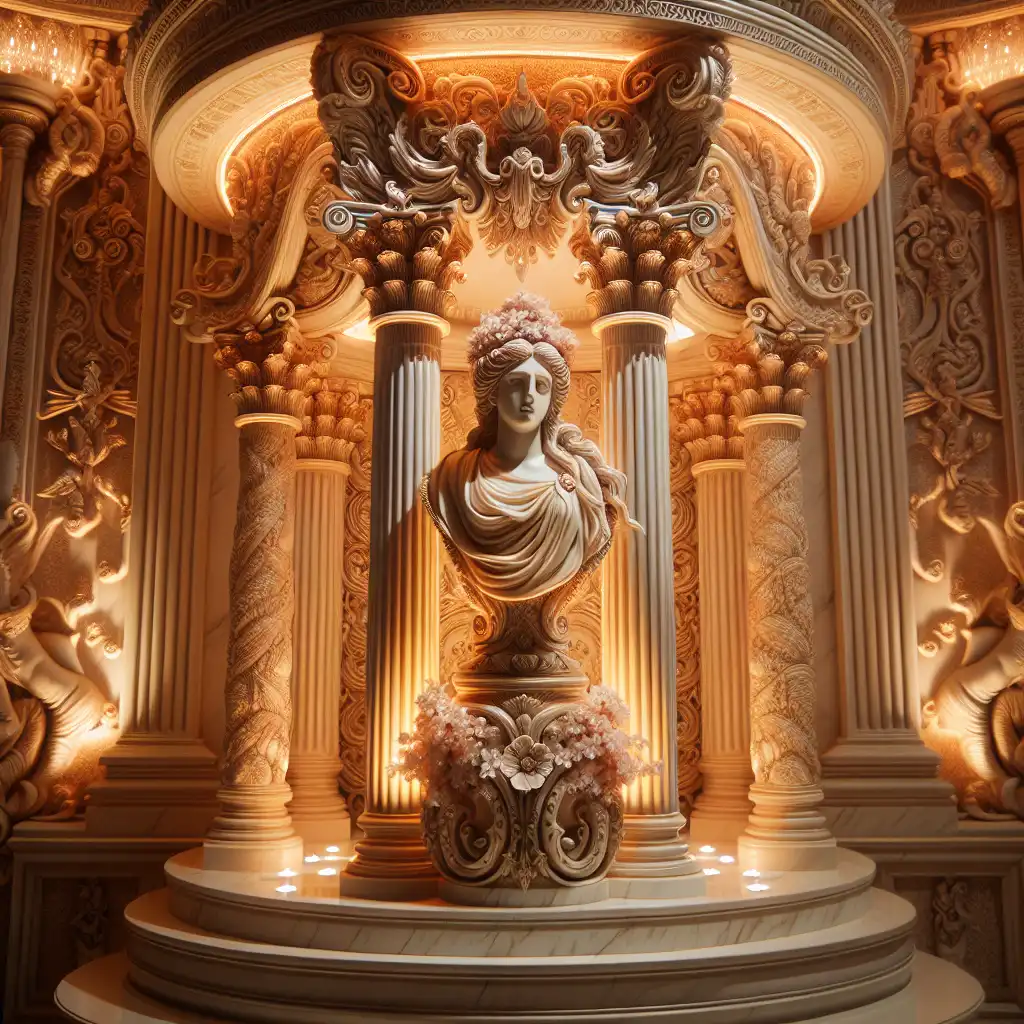
Caryatid
Architectural Origin
Derived from Greek architecture, a caryatid is not just any statue but one that supports structures.  The porch's roof was held up by a caryatid.
The porch's roof was held up by a caryatid.
Female Form
Caryatids represent women, often draped in long robes, and are distinct from male counterparts called atlantes.  Each caryatid in the row stood poised with elegant features.
Each caryatid in the row stood poised with elegant features.
Sculptural Function
Caryatids are functional art pieces, blending aesthetics with the practical role of a support column.  Behind the altar was a splendid caryatid, doubling as a structural pillar.
Behind the altar was a splendid caryatid, doubling as a structural pillar.